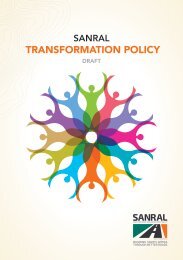Medical Focus - GPH - Vol 3 No 2 250521
You also want an ePaper? Increase the reach of your titles
YUMPU automatically turns print PDFs into web optimized ePapers that Google loves.
Outlook of paediatric tuberculosis in the
Covid-19 pre-vaccine era
Dr Ray Ezekiel Onoja
Department of Paediatrics & Child Health, University of Ilorin Teaching Hospital, Ilorin, Nigeria
Professor S. Kolade Ernest MBBS(Ibadan), FWACP(Paed), Cert. HP & Mgt., FSM, MNIM, FRCPCH (UK)
Department of Paediatrics & Child Health, University of Ilorin Teaching Hospital, Ilorin, Nigeria
he COVID-19 pandemic caused by the novel
coronavirus (SARS-CoV-2), commenced in Wuhan,
China in late 2019 with rapid global spread, sparing
no continent, with the first African case being
reported in Egypt in February 2020. By the 20th of February
2021, more than 111 million cases globally had been reported
with almost 2.5 million deaths. 1
Nigeria who has been battling other infectious diseases like
tuberculosis, HIV and malaria for decades without significant
eradication success, has also been affected with the pandemic.
Nigeria had reported 150,908 cases and 1,813 deaths as at
20th February 2021. The impact of this pandemic is far reaching
and the consequence of both the disease and measures
put in place to control the disease are beginning to emerge. 2
The burden of TB/HIV and multidrug-resistant TB is high in
Nigeria. The country is ranked seventh among the thirty high
TB burden countries and second in Africa. It is estimated that
407,000 HIV negative people in Nigeria have TB each year. 3
In addition there are an estimated 63,000 HIV positive people
that get TB each year. An estimated 115,000 HIV negative people
die from TB in Nigeria each year and an estimated 39,000
HIV positive people also die from the disease.
TB incidence is anticipated to increase in high burden HIV/
TB countries including sub-Saharan African countries with increasing
COVID-19 burden. 4
In a retrospective cohort study 5 involving a review of medical
records of children (0-14 years) with TB in 3 states in Nigeria,
it was discovered that of 724 childhood TB cases registered
during the review period, 220 (30.4%) were aged 0-4 years.
Fifty-eight percent had pulmonary TB. New TB infection in
98.5%, and human immunodeficiency virus (HIV) coinfection
was found in 108 (14.7%). About 28% (201) were bacteriologically
diagnosed. The proportion of TB treatment success was
83.0%. Treatment success was significantly higher in children
aged 5-14 years than those 0-4 years (85.3% vs 77.7%, P = .01).
Factors associated with poor outcomes in patients aged 0-4
years were male sex, HIV-positive status, and clinical method
of diagnosis. The arrival of COVID-19 would possibly be a ‘double
burden’ that must be continuously evaluated to see what
difference vaccines would make.
COVID-19 and TB co-infection
COVID-19 is a highly contagious acute viral disease, whereas
TB is a chronic bacterial disease. Both COVID-19 and TB affect
the respiratory system, primarily the lungs, and have similar
symptoms such as cough, fever and breathing difficulty, although
the severity and duration of the symptoms may vary.
While the route of transmission for COVID-19 and TB may be
similar and require close contact with infected people, the efficiency
in transmission is better in COVID-19 compared to TB.
For COVID-19, the source of infection can be both symptomatic
and asymptomatic patients, while for TB the main source
of infection is symptomatic patients with productive cough. 6,7
Coinfection of TB and SARS CoV-2 is of particular concern due
to several reasons: 8,9
• Concern #1:
Diagnosis of TB is likely to be missed due to non-specific
clinical features in both (TB & COVID-19) and lack of radiological
findings specific to TB.
• Concern #2:
COVID 19 or use of immune-modulators in moderate-severe
COVID-19 may lead to reactivation of latent TB in high
endemic areas.
• Concern #3:
Co-existing active TB disease may predispose to severe
COVID 19 illness from basic immunology considerations.
• Concern #4:
Possibility of drug-drug interactions (e.g. rifampicin and
remdisivir) due to simultaneous use of anti-TB medications
and available COVID 19 therapeutic options.
Disease outcomes
Some studies have described the outcome of COVID-19 in
people and children with current or active TB disease. TB disease
was either diagnosed before contracting COVID-19 or
was diagnosed at the time of COVID-19 diagnosis, due to some
overlapping symptoms in people with COVID-19 and or TB. 5,6
Most of these studies reported that current TB disease was
associated with severe COVID-19 that required hospitalisation
and oxygen supplementation or ventilation. However, most of
the patients recovered from COVID-19 and were discharged
from hospital. Some studies reported increased mortality in
people with COVID-19 and active TB, and concluded that TB
was associated with prolonged recovery from COVID-19 and
or mortality. All studies with data on COVID-19 in people with
previous TB reported that previous TB was associated with severe
COVID-19, though most of the patients recovered after
prolonged stay in hospital. In the future, lung lesions associated
with COVID-19 may increase the risk of PTB, which induces
a true vicious circle of HIV-TB-COVID-19 co-infection. Generally,
children with TB and COVID-19 have mild COVID-19 disease.
Reasons for this require critical evaluation in the future.
4
Vol 3 No 2 - 2021











